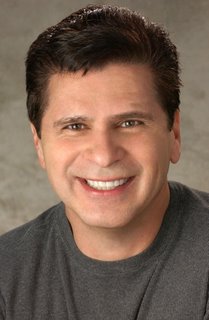
Listening In
December 23, 2005
By Sandy Wells
Oldies K-Earth 101 names new program director
K-Earth 101 (KRTH-FM 101.1) has appointed former KOST-FM/KBIG-FM programmer Jahni Kaye to take over as program director for the oldies giant starting Jan. 3.
“K-Earth 101 is legendary not only in Los Angeles, but throughout the world as one of the finest music radio stations, said Kaye. “K-Earth 101’s uptempo, foreground presentation is very exciting and I’m really looking forward to taking the station to the next level.”
Kaye’s track record in the business is almost unrivaled. At KOST-FM (“The Coast”), he was the longest running program director of a music station in Los Angeles. Under his direction, KOST picked up two Marconi Awards, four Billboard Awards and three Gavin Awards for “Station of The Year.” Kaye also received four Billboard Awards and two Gavin Awards for “Program Director of the Year.” His resume includes stints at LA stations KUTE, KKDJ, KGBS, KROQ, and KBIG. His latest position was Director of AC Programming for Clear Channel/LA.
The naming of Kaye marks a major change in direction for the oldies giant. Since the early 90s, K-Earth has patterned itself after the glory days of legendary top 40 KHJ-AM 930. With program director Mike Phillips at the helm, and later, under his music director and protégé Jay Coffey, the station continued to echo the sound of “Boss Radio.” With The Real Don Steele in afternoon drive and Robert W. Morgan in mornings – timeslots they occupied on KHJ – K-Earth 101 enjoyed its greatest popularity during the mid 1990s.
After the deaths of Steele and Morgan and the exit of Phillips, Coffey tweaked the format with new jingles, adding some more hits from the 70s and hiring some new talent.
His pick for morning drive, Gary Bryan, was moved to afternoons and replaced by former KIIS-FM DJ Hollywood Hamilton this year, by which time, Coffey appeared to be on his way out as programmer.
I can only guess what Kaye will do with K-Earth. He inherits a talent roster that embraces a curiously inconsistent mix of DJ styles and attitudes. It will be interesting to see how he sorts all that out.
Even before his arrival, the station has added more 70s hits and is clearly advancing the oldies timeline to catch a newer wave of nostalgia consumers. The station is now referring to itself in the latest press releases as the “premiere adult hit station” playing “The greatest hits on earth.”
With some pressure from Jack FM (KCBS-FM 93.1) and satellite radio and to expand the playlist of songs, K-Earth will probably continue to broaden its mix of hits.
K-Earth 101 claims to be among the few U.S. radio stations that attract more than million-plus listeners weekly. Jack Silver, Operations Manager said of Kaye’s appointment, “We are handing over a lot of responsibility to Jhani Kaye and he is among the elite few who have the experience to grow the coveted adult audience of K-Earth 101.”
In my interviews with Phillips and Coffey, both defended the extremely tight list of oldies (3-500 songs by most estimates) as the only way to guarantee high ratings. Phillips said it just never made sense to play anything but the songs that test highest in the research. Coffey said every time the playlist was expanded in the past, the ratings would go down.
But with Jack FM’s apparent no holds barred approach to song selection, the rules have changed. It remains to be seen how Kaye, who made his reputation arranging impeccably smooth 40 minute sets of easy listening pop hits, rises to the challenge of reinventing K-Earth 101.
